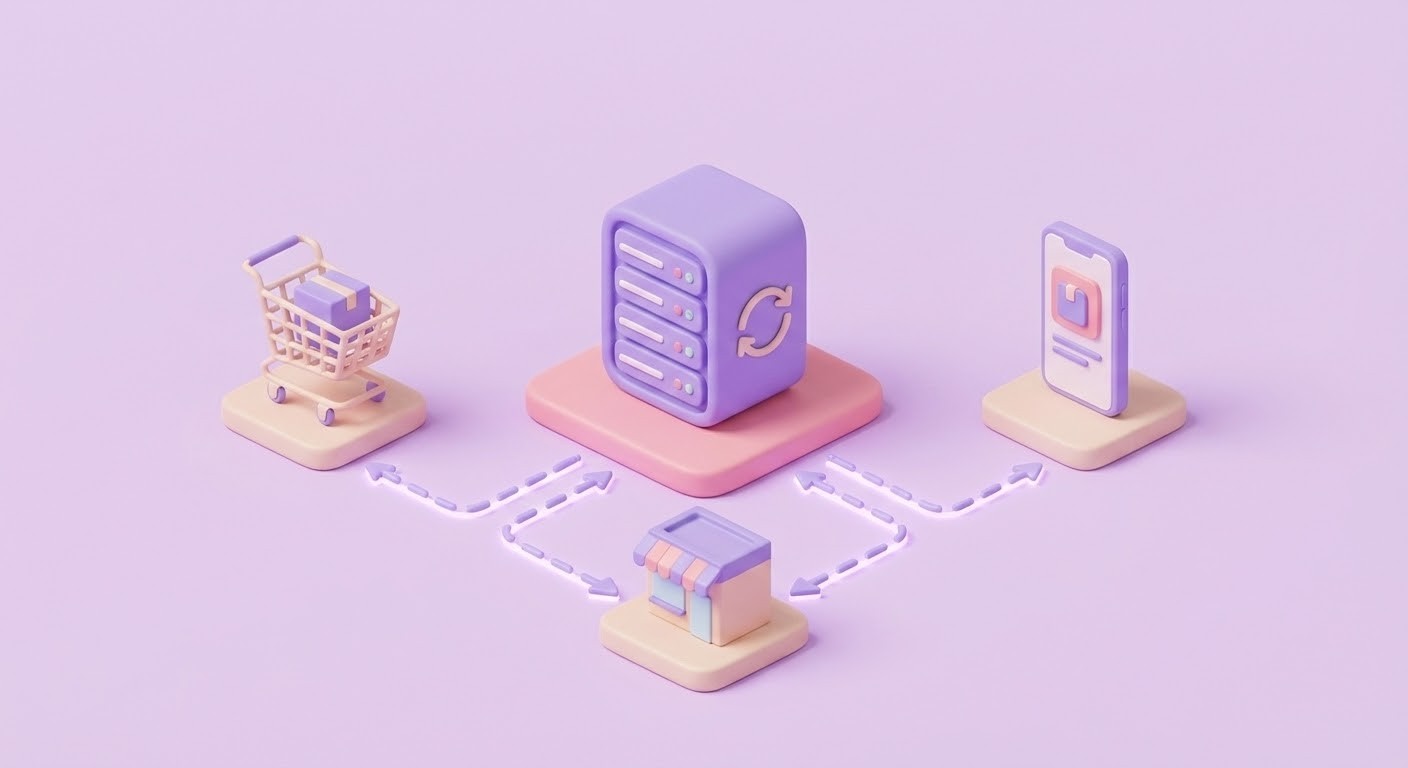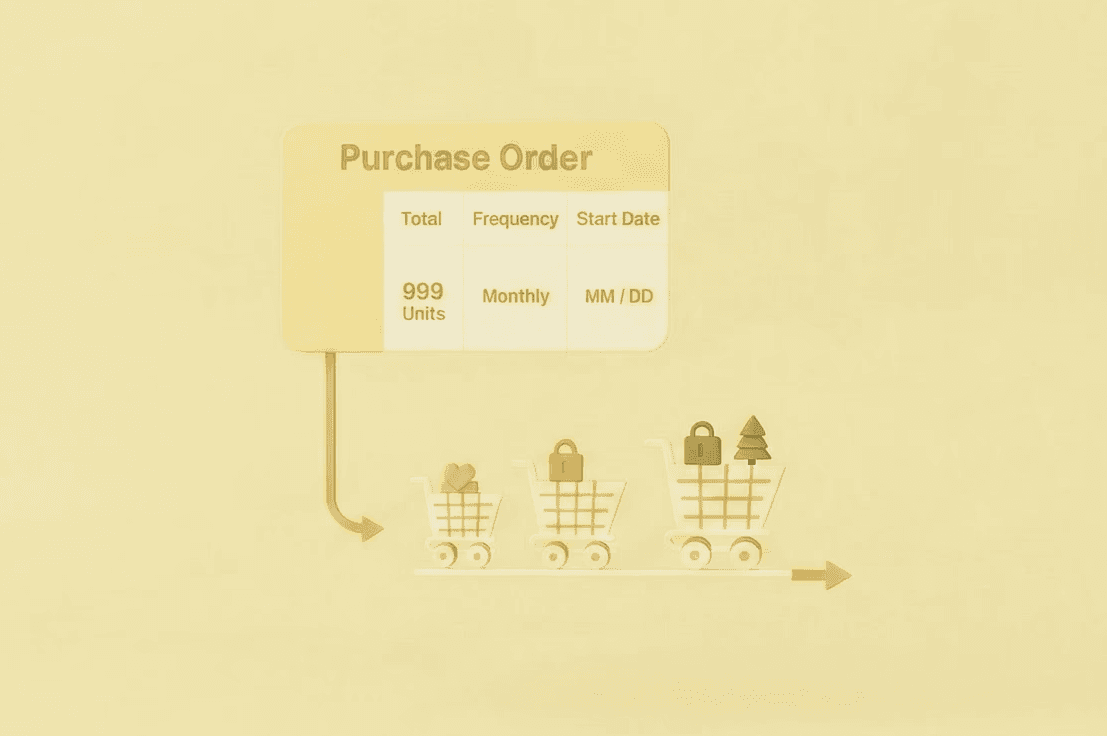Blog
Educational
Best Inventory Tools for Smarter Reorder Points with OTB Planning in 2025
Best Inventory Tools for Smarter Reorder Points with OTB Planning in 2025
Laura B
Marketing Analyst
Oct 16, 2025
What “OTB-Driven ROP” Actually Means
Most merchants still treat OTB and ROP as separate workflows: finance sets the period budget, while operations handles replenishment. This disconnect causes friction—bestsellers go out of stock while slow movers drain cash.
An OTB-driven ROP workflow solves that. You start with a budget by category or department, forecast demand and lead times, then calculate safety stock based on your target service level. From there, your system generates a ranked buy list across all SKUs and locations—but only funds what fits inside the approved OTB.
If the recommendations exceed budget, the engine automatically reallocates spend toward SKUs that protect sales and margin. In practice, this means your most important products always get funded first, and your OTB remains balanced throughout the season—no spreadsheets, no guesswork.
Key Ideas in Plain English
Open-to-Buy (OTB): Your spend limit for the period, usually tracked by department or category. It updates as sales and receipts post, ensuring budget agility.
Reorder Point (ROP): The minimum stock level that triggers a new purchase order—calculated as expected demand during lead time plus a safety buffer.
Safety Stock: The protection layer against uncertainty in demand or supply. Higher service-level targets (e.g., 98% for A-SKUs) require larger buffers.
Lead-Time Learning: Vendors rarely deliver on schedule. Modern systems track actual receipt data to refine ROPs dynamically.
PO Automation: Once funding and priorities are clear, the system generates supplier-grouped purchase orders with approvals and ERP/WMS sync built-in.
“OTB doesn’t live in a dashboard—it decides what gets funded right now.”
Let’s say you have $120,000 OTB for Apparel—Core this November.
Your engine recommends $150,000 of buys across 200 SKUs.
When OTB is applied, the system funds only $120,000—ranking SKUs by GMROI, stockout risk, and service level.
Core sizes of top-selling styles get funded first; fringe colors roll to December. You approve POs by supplier in minutes. Receipts post automatically back to ERP, and your OTB remaining resets to $0—by design.
How Platforms Differ (Explained, Not Just Listed)
SMB Replenishment Apps:
These are fast to deploy and good at forecasting, but most treat OTB as a static report. True OTB enforcement means dynamically changing recommendations when budgets shift. In demos, ask vendors to reduce OTB by 20% and show how the buy list reprioritizes in real time.
ERP-Native Planning Systems:
In these, OTB usually lives in financial or merchandise planning modules, while ROP sits in demand or inventory modules. The financial integration is excellent, but connecting the two often requires custom setup. Ideal for finance-led organizations with established ERP workflows.
Enterprise Planning Suites (MFP/WSSI):
Powerful at managing top-down and bottom-up OTB scenarios across seasons or regions. However, ensure that SKU-level funding changes when budgets shift—many suites still treat OTB as a static overlay, not a live control.
Inventory Operating Systems:
The newest category—unifying demand forecasting, replenishment, purchase orders, and backorders under one roof. Systems like Tightly combine explainable AI forecasts, live OTB enforcement, lead-time learning, and PO automation. This model suits brands that want fewer tools and more transparency.
What to Look For
The best OTB-driven platforms share five core traits:
Live OTB Enforcement:
If you cut your OTB by 20% mid-demo, the funded SKU list should immediately update.
Explainable Forecasting:
You should be able to click any SKU and see how the forecast, service level, safety stock, and MOQ interact.
Lead-Time Responsiveness:
When supplier lead time shifts, ROPs and funded recommendations should recalculate instantly.
PO Conversion:
Recommendations should become real, supplier-grouped POs—approved, synced, and auditable.
Reliable Backorders:
If you accept backorders, the system should gate them behind live POs and display accurate promise windows.
Light Comparison by Capability
Platform Type | Strengths | Best For | Considerations |
SMB Apps | Quick deployment, good forecasting | Shopify-heavy teams | Check for true OTB enforcement |
ERP-Native | Strong financial grounding | Mid-to-large retailers | May require configuration |
Enterprise Suites | Multi-region OTB updates | Global orgs | Setup complexity |
Inventory OS (e.g. Tightly) | Unified demand → PO loop | Scaling retail/DTC brands | Fewer integrations needed |
The Minimum Math
Formula:
Reorder Point (ROP) = Demand during lead time + Safety Stock
Safety stock adjusts for uncertainty: the more variable your sales or supplier performance, the larger the buffer you need. Protect high-margin SKUs (A-tier) at ~98% service levels, B-tier at ~95%, and long-tail products closer to 90%.
You don’t have to be a statistician—just choose a platform that makes these calculations visible and explainable.
Results to Expect (And Measure)
Fewer stockout days on core SKUs.
Higher inventory turns as low-yield SKUs lose funding first.
Faster PO cycles with auto-grouped approvals.
Improved promise accuracy on backorders with real PO gating.
“OTB-driven replenishment isn’t theory—it’s the fastest path to profit protection.”
Buyer Script You Can Read Aloud in a Demo
“Please import our last 18–24 months of sales and receipts. Show us five SKUs—two bestsellers and three long-tail—and explain the forecast, service level, safety stock, and ROP. Now cut OTB by 20% and show which SKUs lose funding. Then increase Supplier X’s lead time by 30% and regenerate. Finally, create supplier-grouped POs and show remaining OTB.”
If a vendor can do that, they don’t just forecast—they operate. That’s a system treating inventory as a growth engine, not a cost center.
FAQs
What is an OTB-driven reorder point?
It’s a method where your period budget (OTB) directly funds or defers SKU-level reorder recommendations. ROP defines when to order; OTB decides what actually gets purchased this cycle.
Do I need OTB at the SKU level?
No. OTB typically stays at the category or department level. The system allocates to SKUs by ROI, service level, and stockout risk.
How do I set service levels?
Protect your A-SKUs at around 98%, B-SKUs near 95%, and long-tail products around 90–93%, adjusting for margin and volatility.
Can backorders help without hurting CSAT?
Yes. Gate them behind real POs, cap promise windows, and communicate ETA ranges clearly.
Laura B
Marketing Analyst
Share






